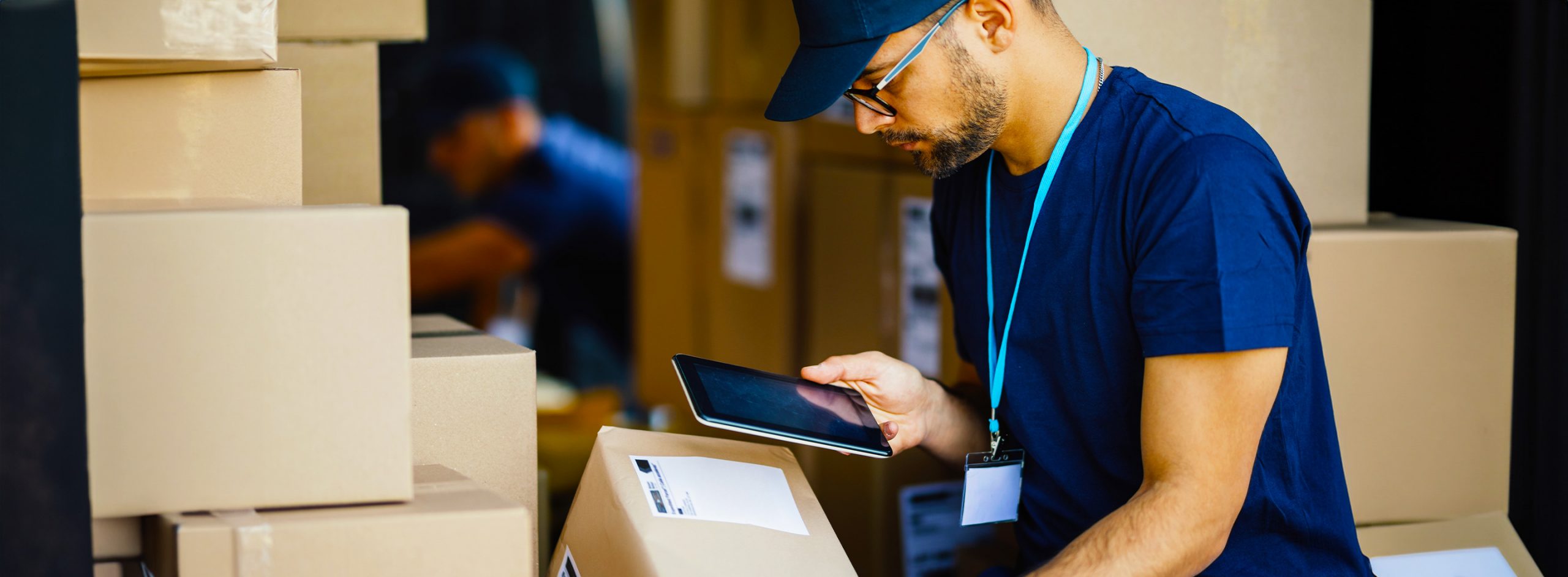In today’s fast-paced world, where the e-commerce industry is thriving, the last mile of delivery has become a crucial battleground for businesses. The efficiency and precision of last-mile delivery can significantly impact customer satisfaction and influence repeat business. In this blog, we delve into the transformative influence of data-driven logistics planning on last-mile delivery, exploring its applications in e-commerce, specialty and general retail, as well as in mobility and transportation.

E-Commerce — Last-mile Delivery, Specialty and General Retail
The rise of e-commerce has redefined the way consumers shop, emphasizing convenience and prompt deliveries. The rapid increase in online orders has led to the phenomenal growth of the global last-mile delivery market, which is estimated to reach $200 billion by 2027.
Last-mile delivery, the final portion of the supply chain, is often the most challenging yet vital aspect for online retailers. This is where data-driven logistics planning comes into play. By harnessing the power of data analytics, e-commerce companies can optimize delivery routes, predict demand patterns, and enhance the overall efficiency of their supply chains. Predictive analytics enables businesses to forecast demand based on historical data, allowing them to allocate resources effectively and minimize delivery times.
Specialty and general retail also benefit from data-driven last-mile delivery. Retailers can leverage customer data to understand preferences and optimize delivery schedules accordingly. Personalized delivery options, such as time slots and preference modes, can be tailored to individual customers, enhancing the overall shopping experience.
Furthermore, data-driven logistics planning empowers retailers to proactively address challenges such as traffic congestion, weather conditions, and other unforeseen circumstances. By integrating real-time data into the delivery process, companies can adapt and reroute deliveries on the fly, ensuring a seamless and reliable last-mile experience.
Mobility and Transportation — Routing and Tracking, Scheduling, Track and Trace
Mobility and transportation are at the core of last-mile delivery, and data-driven logistics planning plays a pivotal role in optimizing these processes. Routing and tracking, scheduling, and track and trace functionalities are all enhanced through the integration of data analytics.
Routing and tracking are streamlined by analyzing historical and real-time data to identify the most efficient routes. This not only reduces delivery times but also minimizes fuel consumption, contributing to environmental sustainability. Machine learning algorithms can continuously optimize routes based on various factors, ensuring that delivery vehicles are always taking the most efficient path.
Scheduling becomes more accurate and dynamic with data-driven insights. By considering factors like delivery windows, traffic conditions, and driver availability, businesses can create optimized schedules that maximize delivery efficiency. Intelligent scheduling also allows for better resource allocation, ensuring that delivery fleets are utilized to their full potential.
Track and trace functionalities, enabled by data-driven logistics, provide real-time visibility into the entire delivery process. Customers can track their orders in real-time, receiving accurate and up-to-date information on the status and location of their deliveries. This transparency not only enhances customer trust but also allows businesses to address issues promptly and proactively.
Customer Experience — Personalization and Communication
Data-driven last-mile delivery goes beyond mere efficiency; it plays a crucial role in enhancing the overall customer experience. Recent surveys have revealed that poor delivery experiences can prevent 85% of online shoppers from making future purchases from the same retailer.
By understanding customer behavior through data analysis, businesses can offer a personalized and convenient delivery experience, fostering customer loyalty. Personalization is a key aspect, where customer data is utilized to tailor delivery options according to individual preferences. This includes providing flexible delivery time slots, alternative delivery locations, and even allowing customers to choose eco-friendly delivery options.
Communication is another critical component of the customer experience. Data-driven systems enable automated and real-time communication between businesses and customers. Customers receive timely notifications about their delivery status, estimated arrival times, and any potential delays. This level of transparency not only manages customer expectations but also builds trust and satisfaction. In the event of unforeseen circumstances, such as delays due to weather conditions or traffic, proactive communication helps manage customer expectations and ensures a positive overall experience.
Sustainable Last-mile Delivery
With increasing awareness about carbon footprint, businesses are increasingly focusing on sustainable practices for last-mile delivery, accounting for 53% of shipping costs.
Data-driven logistics planning plays a vital role in optimizing delivery routes to reduce fuel consumption and minimize the carbon footprint of delivery fleets. Machine learning algorithms analyze data on traffic patterns, road conditions, and historical delivery data to find the most fuel-efficient routes.
Furthermore, businesses can use data to strategize eco-friendly delivery options, such as electric vehicles or even bicycle couriers for shorter distances. This not only reduces environmental impact but also aligns with the values of eco-conscious consumers. By incorporating sustainability into last-mile delivery through data-driven decision-making, businesses can appeal to a broader customer base and contribute to a greener, more sustainable future.
The future of last-mile delivery
The future of last-mile delivery looks promising with the advancements in autonomous technologies, including AI, robotics, and advanced sensors. With the growing popularity of drones, self-driven vehicles, and robots, the autonomous last-mile delivery market is estimated to reach $4.2 billion by 2030. These disruptive technologies are designed to increase efficiency by eliminating human intervention and reducing carbon footprint by promoting sustainable delivery solutions.
Author’s Profile
Padmanabhan Venkatesan
Senior Vice President & General Manager, Consumer Tech







